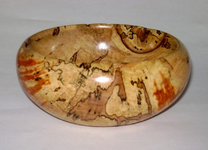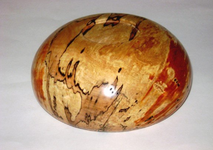EatenAppleCrafts
Member
Hello all, I turned a spalted maple pen and noticed, only after turning, that the bottom portion, along the spalting line was a slightly different color. More muted but still interesting. I am used to larger color differences with spalting.
I went to my copy of Understanding Wood by R. Hoadley, but I still don't understand the effect of spalting on coloring and brightness, etc. Possibly lack of nutrients? Obviously I'm not scientist, but does someone know why this happens so that I can explain it to friends and clients?
I went to my copy of Understanding Wood by R. Hoadley, but I still don't understand the effect of spalting on coloring and brightness, etc. Possibly lack of nutrients? Obviously I'm not scientist, but does someone know why this happens so that I can explain it to friends and clients?
Attachments
-
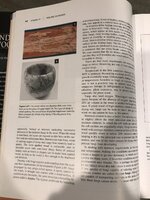 74650550-2550-4F5A-A27C-21FAC07A07F0.jpeg360.1 KB · Views: 378
74650550-2550-4F5A-A27C-21FAC07A07F0.jpeg360.1 KB · Views: 378 -
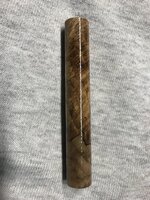 2AE05E43-6AEE-4A5B-BAF1-CA3A64D71A8F.jpeg532.1 KB · Views: 384
2AE05E43-6AEE-4A5B-BAF1-CA3A64D71A8F.jpeg532.1 KB · Views: 384 -
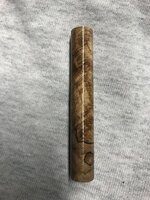 13F32913-5210-464A-BBEA-BBF8093554F6.jpeg493.9 KB · Views: 379
13F32913-5210-464A-BBEA-BBF8093554F6.jpeg493.9 KB · Views: 379 -
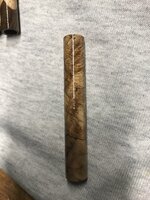 4905DFD2-19DF-450A-850E-58B0B8D8FFDB.jpeg428.4 KB · Views: 362
4905DFD2-19DF-450A-850E-58B0B8D8FFDB.jpeg428.4 KB · Views: 362 -
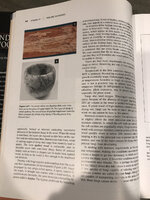 354C6612-ED67-4793-907A-4CF87926A906.jpeg381.4 KB · Views: 356
354C6612-ED67-4793-907A-4CF87926A906.jpeg381.4 KB · Views: 356

